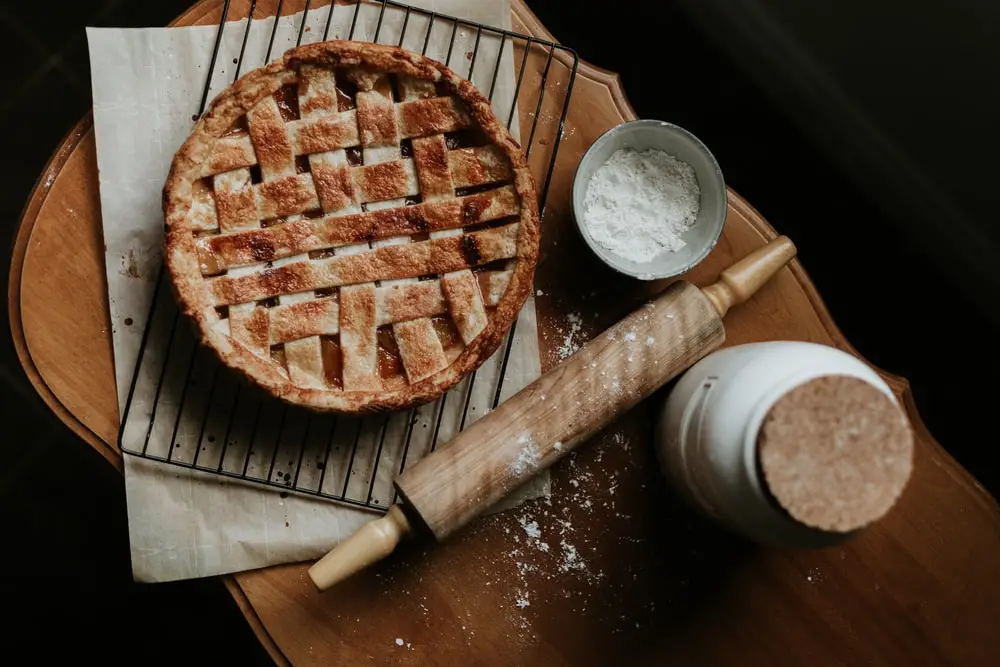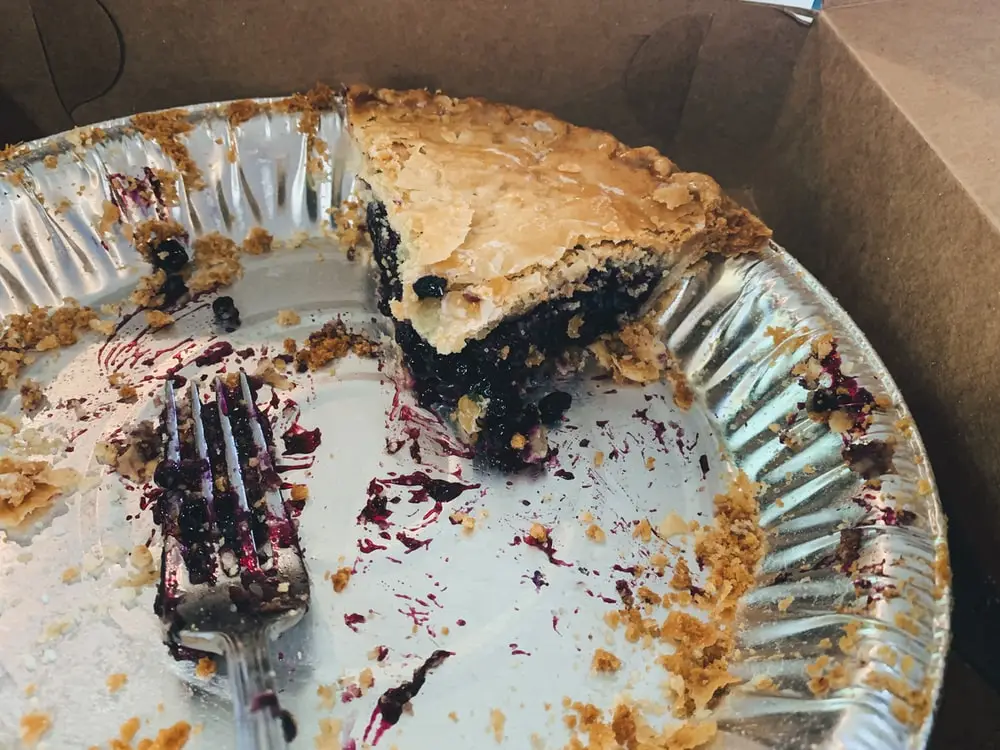Whether fruit-filled, chocolate or pecan-based, pies are famous as a holiday dessert recipe item. However, you might find it disappointing to one day cut into your freshly made pie only to realize that its crust isn’t well cooked.
Fortunately, this guide answers an important question you might have asked in the past, “what are some of the best ways to get rid of bottom pie crust that is not well cooked.
You have various solutions to consider for this process, including eggs, chocolate, baking blind, and other similar measures. The solution type that applies to your situation depends on your needs and expected results.
Tips for Fixing Bottom Pie Crust Not Cooked
Below are some of the techniques you can use to fix a bottom pie crust not cooked:

Tip #1. Use the the “Blind Baking” Technique
One of the best techniques you can use to solve this issue is the blind baking technique. You bake the crust entirely or partially (when you plan on using cream or custard) before incorporating the filling.
The best way to avoid the crust from bubbling is to use a piece of parchment paper. The paper will help weigh down the pie weights even before setting them in the oven.
We recommend You Start with this Youtube Video on Blind Baking Pies by America’s Test Kitchen.
Tip. #2. Invest in A Suitable Rack
The type of rack you use has a significant impact on stopping an undercooked crust. Consider using a low rack in your oven for the baking process. It helps concentrate the heat in the bottom section, which will resolve the undercooking issue.
Remember the importance of the bottom crust in holding the liquid and moisture in the pie’s filling. So, this is still an excellent solution regardless of whether or not you have complications with a soggy crust.
Coating the surface of the bottom crust is vital to help stop sogginess, which often leads to the undercooking issue. Consider using products such as corn syrup or whisked egg whites before adding the filling. Doing this will help create a seal between the dough and filling, which is vital to the quality of the pie.
Recommended Product: Oven Safe, Heavy Duty Stainless Steel Baking Rack & Cooling Rack

Tip #3. Use A Cookie Sheet
You also have to consider placing the pie ready for use on a hot cookie sheet in the oven. The reason is that this process helps to break down the fat in the past, such that dough will now allow the passage of liquid that sits in the filling of your pie.
Before developing the pie, start setting the cookie sheet in the oven. Next, remove it from the oven, and place your pie on it. Ensure you set the cookie sheet using an oven mitt due to the heat. Finally, bake the pie as you would typically do it.
Recommended Product: Nordic Ware Natural Aluminum Commercial Baker’s Half Sheet and the Big Red House Heat-Resistant Oven Mitt
Tip #4. Create a Thicker Crust
The bottom crust section has to be more firm than the other sections of the crust in your pie. Therefore, adding some heft is excellent when you want to maintain the quality of the pie. Start by rolling the bottom section of the pie to become thicker than the top section. Doing this will help stop the moisture in the filling from getting through to the other sections of your dough.
Tip # 5. Add a Layer
Consider creating a barrier in the filing and the dough by setting an ingredient that won’t harm the pie’s flavour. Common solutions we recommend include crushed cereals, bread crumbs, and other relevant alternatives. Doing this will help ensure the bottom section of your pie cooks well and is free from sogginess.
Tip #6. Fill The Pie When Hot
A hot filling is vital in creating the ideal crust quality before setting the pie in the oven. So, if you have to add some filing while the pan is still hot, avoid letting it cool before setting it on the crust. Doing this is vital in addressing the sogginess issue and preventing an undercooked pie.

Tip #7. Bake Using a Hot Baking Sheet
The crust on your pie is likely to be light or flaky when the heat breaks down the small collections of fat on the interior crust section. The result is that steam develops inside the pie, which improves the crust quality.
You have to ensure this process occurs as fast as possible, such that the crust sets before filling starts to seep in, leading to the dreaded sogginess issues. The steps involved here include using a baking sheet in the oven during the heating process. Next, set the pie dist on the hot baking sheet, and this will increase in heat will have a positive impact on the cooking process.
Recommended Product: Nordic Ware Natural Aluminum Commercial Baker’s Half Sheet
Tip #8. Brush The Bottom with Egg
Believe it or not, eggs are an excellent resource you can use in addressing an undercooked pie crust. You should use the egg to help close the surface of the pie so that it creates a barrier between the filling and the pie. Specifically, during the cooking process, the proteins in the egg will break down and help create a barrier that prevents the sogginess issue.

Tip #9. Use a Glass Pan
‘A glass pan makes up for a top-notch resource you can use to monitor the cooking process of your pie. There are various types of pan materials, with the common ones being ceramic and metal. There are even foil made types that you are likely to come across in various elementary schools today.
However, when you want to ensure the pie cooks ideally, consider using a glass pan. You will find it easy to look through the bottom section of the pie and adjust the cooking process as required. Consider them to be the “x-ray goggles” you have needed to determine whether the bottom pie section is cooked or not.
Recommended Product: OXO Good Grips Glass 3 Qt Baking Dish with Lid
Frequently Asked Questions (FAQ)
How Do You Fix an Undercooked Bottom Pie Crust?
The best way to fix an undercooked bottom pie crust is to cover the top section with some foil, so it doesn’t experience any burning. Then, place the pie back in the oven, and set it in the oven at about 455ºF to 460ºF for about 13 minutes. Ensure you set the rack correctly, such the underside gets the best quality heat.
Why is the Bottom of the Pie Not Cooked?
There are various reasons why the bottom of your pie is not cooked. A good example would be a lack of property filling, heat, and using the wrong pie creation ingredients. Fortunately, it’s still possible to bake an undercooked pie.
Should I Cook the Bottom Pie Crust First?
Yes, consider rebaking the pie first before you can cook it. The reason is that this helps encourage the correct cooking procedure, such that your pie becomes crisp, delicious, and golden brown. Therefore, ensure you bake the bottom each time for the best results.
Can You Rebake an Undercooked Pie?
Yes, it’s possible to rebake an undercooked pie. However, avoid setting the pie at excessive temperature for long durations. If you want to fix the pie, consider setting it in the oven at 440 degrees Fahrenheit for a few minutes.
There are various solutions and factors you have to consider when stopping the bottom pie crust not cooked issue. The solution you pick depends on your skill, personal preferences, and the type of pie you have prepared. With some practice and the aforementioned techniques, undercooked pies will no longer be an issue.
- How Long Does Vegan Butter Last? Mystery Solved - January 9, 2024
- How Long Does Vegan Mayo Last - January 2, 2024
- From Pot to Plate: How Long Does Vegan Chili Last in The Fridge? - December 26, 2023






 How to Thicken Vodka Sauce – An Illustrated Guide
How to Thicken Vodka Sauce – An Illustrated Guide